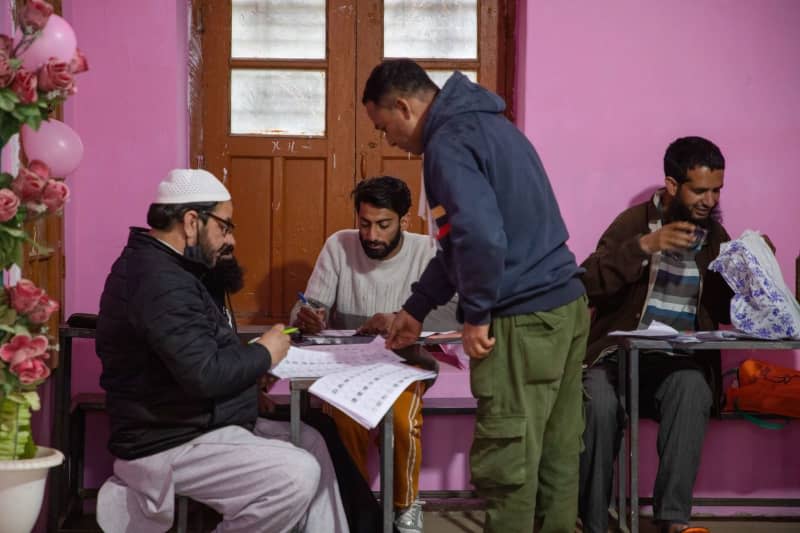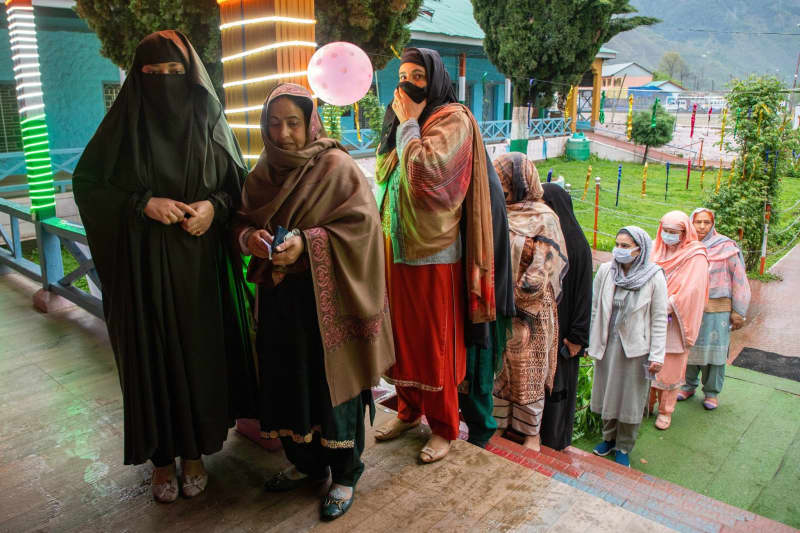Voters in India began heading to the polls on Friday in the first phase of a massive election lasting six weeks, with seats in India’s lower house of parliament and another term for Indian Prime Minister Narendra Modi at stake.
The latest opinion polls put Modi’s Hindu nationalist Bharatiya Janata Party (BJP) far in the lead. The 73-year-old Modi is campaigning for a third five-year term as the country’s leader.
Voting began in 102 of a total of 543 constituencies, according to the Election Commission. There are 36 states and federally administered areas in the world’s largest democracy.
Ballots will continue to be cast in the seven-phase election until June 1, with results expected on June 4.
Around 970 million people are eligible to take part at more than 1 million polling stations across the country. India is home to about 1.4 billion people.
The logistics required to manage an election on India’s scale are immense, made more complicated by India’s diverse geography.
Millions of election workers and security forces using lorries, helicopters, boats and even elephants will transport ballot boxes to all corners of the country – the Himalayas, deserts, sprawling metropolises and remote island villages.
India’s lower house of parliament, the Lok Sabha or House of the People, has nearly 550 seats. The BJP currently holds a majority.
Modi remains popular in India, and the campaign by the BJP – which translates as Indian People’s Party – has focused heavily on his personality and charisma.
The political opposition is relatively weak and fractured. Opposition leader Rahul Gandhi’s Congress Party, which once dominated Indian politics after independence from the United Kingdom in 1947, now holds power in only three of India’s 28 states.
Critics have accused Modi and the BJP of suppressing opposition ahead of the election.
The chief minister of Delhi, Arvind Kejriwal, has been remanded in custody on corruption charges. Bank accounts of the opposition Congress Party have been frozen due to alleged tax debts.
“There is no more democracy in India,” Gandhi said recently.
Under Modi, India has risen to become the world’s fifth-largest economic power and is also playing an increasingly important political role as a counterweight to China.
Modi has invested heavily in modern infrastructure projects such as roads, high-speed trains and airports. But economic growth has not been evenly distributed.
Unemployment remains high and poverty widespread, with many struggling to afford the basic necessities. According to the World Bank, the gross domestic product per capita is around $2,000 per year.
Hinduism, the religion of about 80% of Indian’s population, has moved to the centre of national identity. Opponents warn that religious minorities, such as the country’s 200 million Muslims, are becoming second-class citizens and subject to growing discrimination.
Modi’s election campaign has further inflamed religious tensions. At the start of his campaign, Modi consecrated a Hindu temple on the site of a centuries-old mosque that was destroyed in 1992 by Hindu fanatics.
“With the hardliners in power, Hindu mobs have been given a virtual license to kill Muslims and ideological opponents,” wrote Ashoka Mody, a professor at Princeton University in the US.
Modi has also concentrated political power in his office, while observers in India and abroad say he has undermined the independence of public institutions such as the judiciary as well as the media.
Social programmes, such as efforts to provide free toilets to millions of people, have however won Modi popularity among voters, according to Ian Hall from Griffith University in Australia.
The prime minister’s frequent references to his own humble background as the son of a tea seller also may bolster his appeal.
“He just understands us,” Sonu Kumar, a 25-year-old food vendor in the capital Delhi, told dpa, echoing what many Indian voters think.

